Email is, without a doubt, one of the most effective ways to connect with a target audience, deliver helpful content, and build long-lasting business relationships. MailChimp and Flodesk are two of the most popular email marketing tools that can help you do that. However, although both come with great automation and analytics features, there are a few differences that might make one a better option than the other.
In this Flodesk vs. MailChimp comparison review, we’re going to tell you those differences, and help you pick the better email marketing tool.
Let’s get started.
Flodesk vs. MailChimp: Which One is Better for Email Marketing?
But first, we’ll discuss the most important points of each tool, followed by the difference of the two in every given aspect.
MailChimp Overview
MailChimp is one of the most popular and oldest marketing software in the market. And while most people consider it just a basic email marketing tool, it’s much more than that. For instance, the landing page builder can help you capture leads. Whereas, the marketing analytics feature allows you to identify growth opportunities and understand your audience better.
Flodesk Overview
Flodesk is a relatively new player in the email marketing arena. The tool has gained popularity recently and is considered one of the most user-friendly email marketing software out there.
Moreover, the great customer support, easy-to-understand interface, and beginner-friendly features make it a great option for an email marketing newbie. With that out of the way, let’s take a look at the different features both tools have to offer.
Interface and Ease of Use
Naturally, one of the first things you check in marketing software is the interface and how easy it is to use.
MailChimp
MailChimp has little to no learning curve, which means you don’t have to waste your time understanding the tool and can get to work immediately. Because it’s so user-friendly and reliable, MailChimp has been a go-to email marketing platform for many small businesses and entrepreneurs around the world.
The simple drag-and-drop email builder and tons of customizable templates make this tool so appealing to a non-tech-savvy marketer. You get a lot of aesthetic templates that give your design workflow a jump-start. The good thing is these templates are responsive, which means they’ll load in their best form no matter which device your prospects are accessing them on.
Not only that, but you can also make changes to your email code, which gives you complete creative freedom with your design. As for the interface, the menu on the left lets you navigate to any feature of the software with a single click.
Flodesk
Flodesk stands out from the competition when it comes to user-friendliness. The software has been designed to be used by complete beginners. Plus, the basic templates it provides make the designing process a lot easier.
Flodesk is more geared towards new marketers, so if you are on an advanced level, you might find it limiting in some aspects.
A/B Testing and Forms
A/B testing helps you understand what your audience wants and lets you tweak your strategies to improve your ROIs. Here’s a quick look at the A/B testing capabilities of the two email marketing software.
MailChimp
MailChimp offers a powerful A/B testing feature, however, it’s only available on the paid plans. It lets you test different variables of your emails and identify what works and what doesn’t. These variables can be anything from your audience’s age to how they interacted with your business online. So, what you do is send two variations of the same email to test a single variable.
For instance, sending the same email to two different age groups:
- 18 to 24-year-olds
- 24 to 30-year-olds
The winner can be picked on the basis of:
- Clicks
- Revenue
- Open rate
- Conversions, or more
Flodesk
Unfortunately, you don’t get to A/B test your email campaigns with Flodesk. This can be a big drawback if you want to:
- Understand what your audience really wants
- Craft those perfect emails that get your readers to act
Without the A/B testing feature, you’ll have a hard time identifying the best-performing content.
Landing Pages
One of the most important purposes of a landing page is collecting email addresses of your prospects, or generating leads. As an email marketer, you want to be able to collect as many email addresses as possible.
A well-designed landing page can help you do just that. Here’s a brief look at the landing page features of MailChimp and Flodesk.
MailChimp
MailChimp’s landing page builder lets you create stunning landing pages with a simple drag-and-drop action. This means you need zero coding knowledge to build beautiful landing pages for lead generation. To create a landing page, you will need to click “Create” and select “Build landing page”.

Once you do that, you’ll be asked to name your landing page.

You get plenty of pre-built templates that you can personalize and customize according to your needs. Different templates are suitable for different goals; for instance, the simple lead generation template is designed to help you collect the email addresses of your prospects.

As soon as you select a template, you’ll be redirected to the landing page editor.

Keep in mind that you can always start from scratch by selecting the blank template if you already have a design in mind.
Flodesk
Flodesk offers a simple and effective landing page builder. There are a few pre-built landing page templates that can be a great starting point. After you sign up for Flodesk’s free trial, you’ll have to click on “Forms” at the top of your homepage.
To start building a landing page, you’ll need to select the “Full page” option.

Once you select “Full page”, select a template you want to edit. You then have to choose a segment. The landing page subscribers will be added to this segment.

Once you click on “Save”, you’ll be taken to the landing page builder.
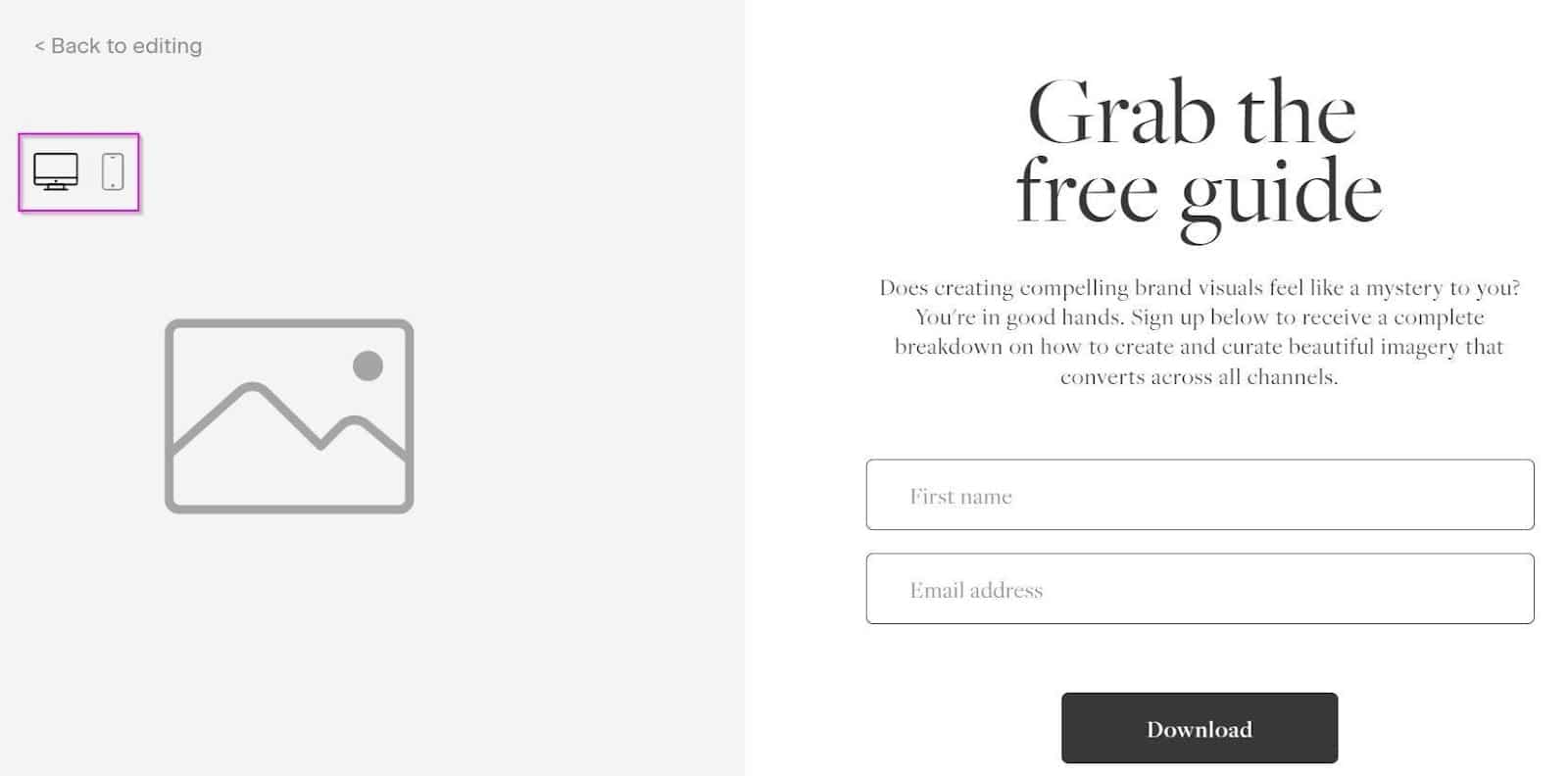
And as you can see in the above screenshot, you can customize your landing pages for desktops as well as mobile phones. This is great as you won’t have to worry about how your landing pages will look on your prospects’ mobile phones.
Email Campaign and Designer
Both tools offer easy and effective email campaign workflows. Here’s a quick look.
MailChimp
MailChimp lets you create and track your email campaigns with ease. To create one, you click on “Create” and select “Design email”. Next, you can name your campaign, add recipients, add a subject line, and go to the editor.
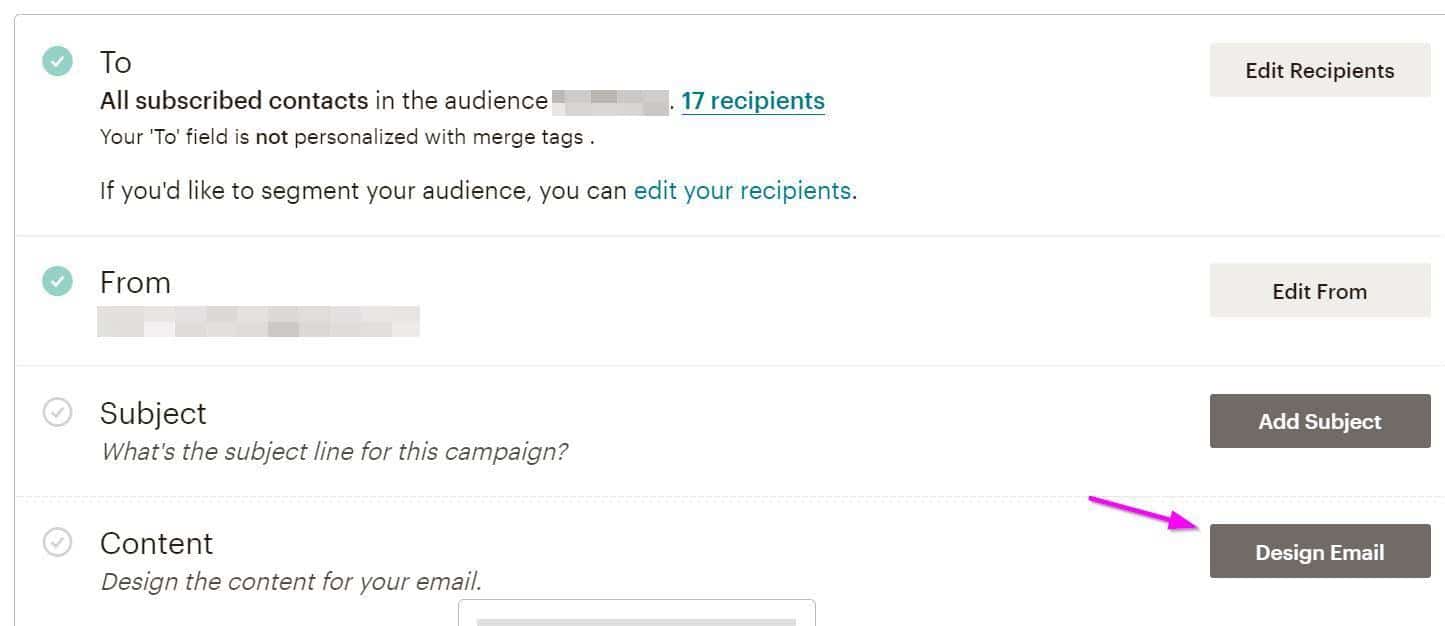
Then, you can either start from scratch or pick a template and start editing it.

As soon as you’re done with designing your email, it’s time to hit send. You can also schedule your emails but the feature is only available on MailChimp’s paid plans. As you can see, sending email campaigns to your audience is pretty straightforward with MailChimp.
Flodesk
This is where Flodesk stands out from its competition. Flodesk’s intuitive email designer is the number one reason behind this tool’s rapid growth. It’s not only super easy to use but also lets you create gorgeous emails with simple drag-and-drop.
To design an email with Flodesk, select “New email” from your dashboard and you’ll be taken to the templates page.

You can choose a template of your liking or select the “Start from scratch” option.
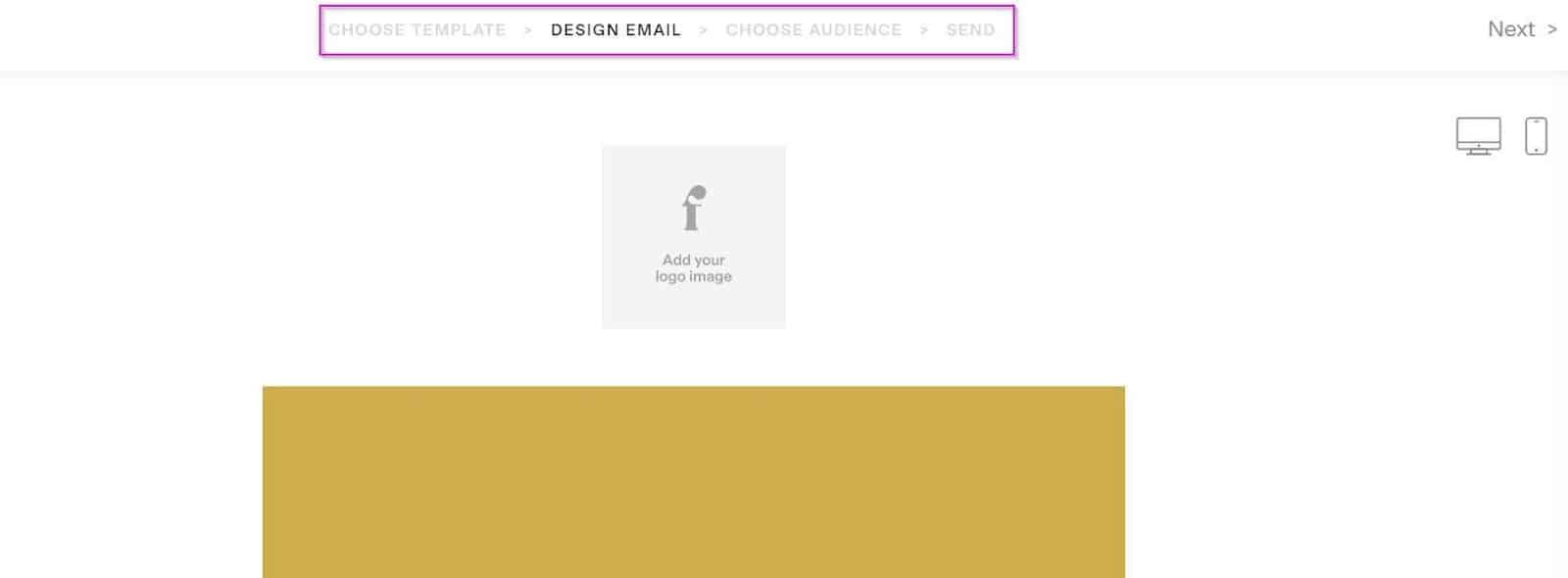
Then, edit your template (Or create a design from scratch). To add different elements to your email design, just click on the little “+” icon and select an element.
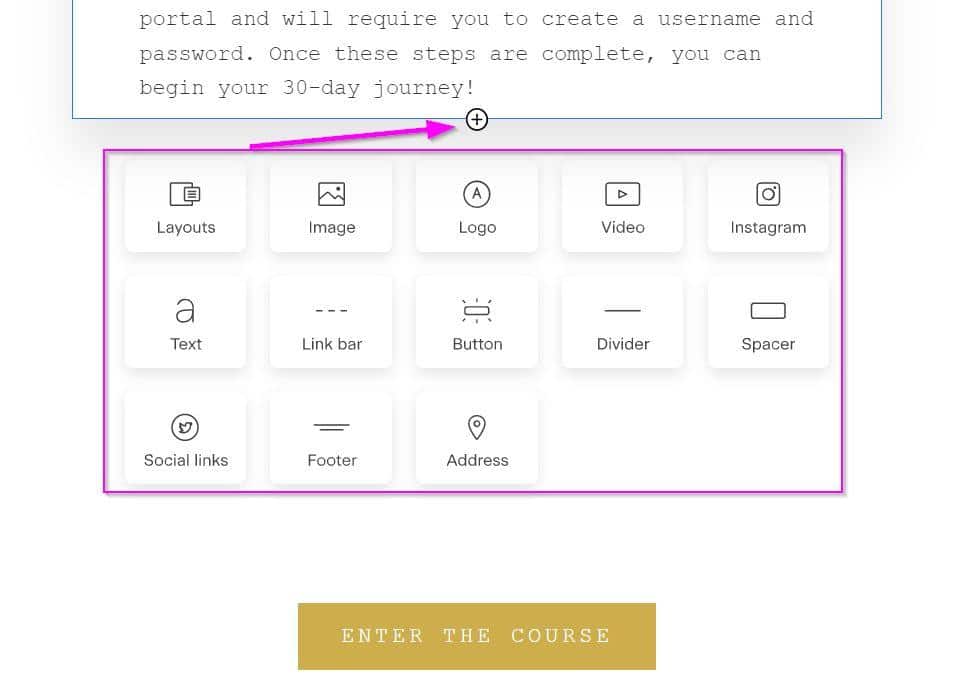
After you add an element, let’s say a text box, you can customize it from the right menu.
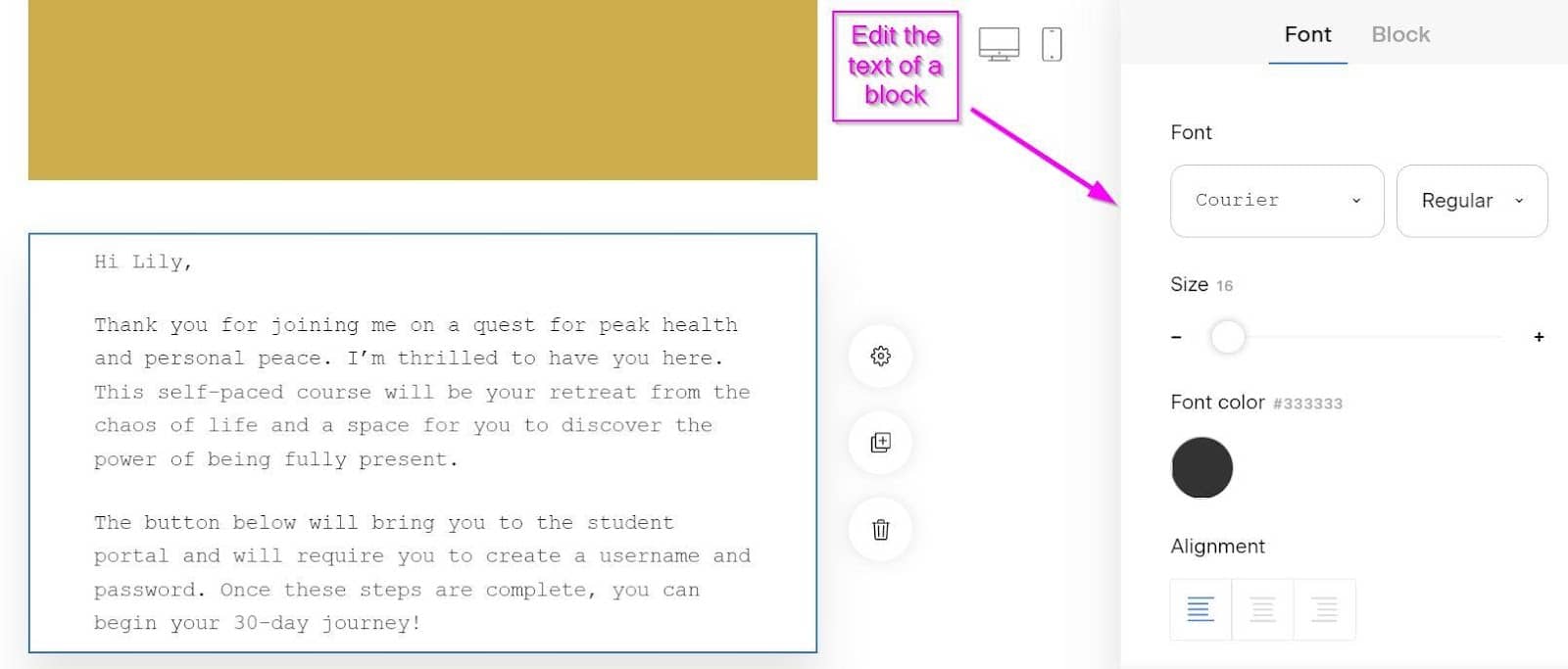
Once you’re done editing, you’ll need to enter the name of the sender.
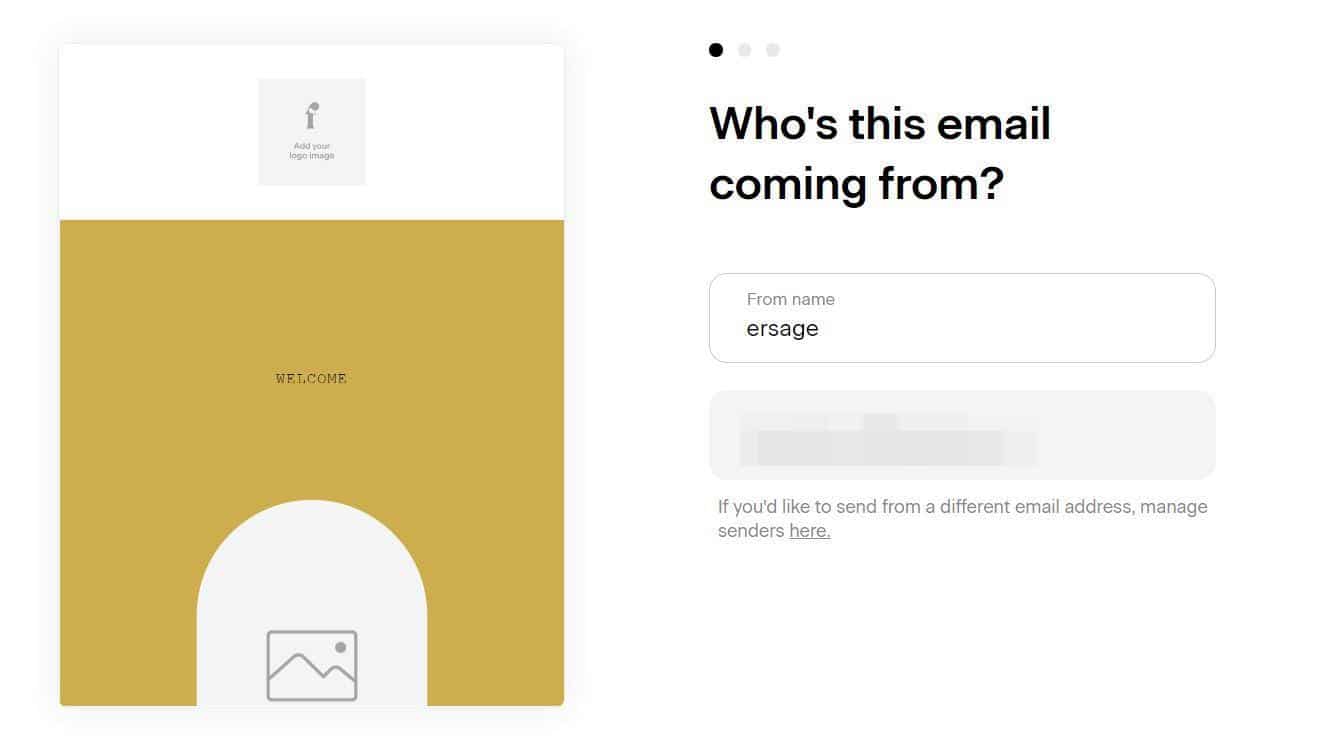
You’ll then have to add a subject line and preview text to your email.

Then, you’ll be asked to select or upload the list of your recipients and add segments.

That’s it. Your email is now ready to be sent to your audience.
Automation or Drip Campaigns
Email automation or drip sequences let you add triggers to your campaign. This means whenever someone takes a specific action, they’re served with a pre-designed sequence. This can include:
- Welcome sequences
- Nurture sequences, and more
Let’s see what MailChimp and Flodesk offer in this department.
MailChimp
MailChimp offers easy-to-use industry-leading automation features. Its automation workflows are powerful, but they don’t come with MailChimp’s free plan.
To create an automation workflow, you’ll need to go to “Automation” and then “Create a journey”.

The customer journey is simply a sequence of emails people get in response to how they interact with your business. You can alter this journey by adding different triggers to them. But first, you’ll need to pick a starting point; where do you want the customer journey to begin?
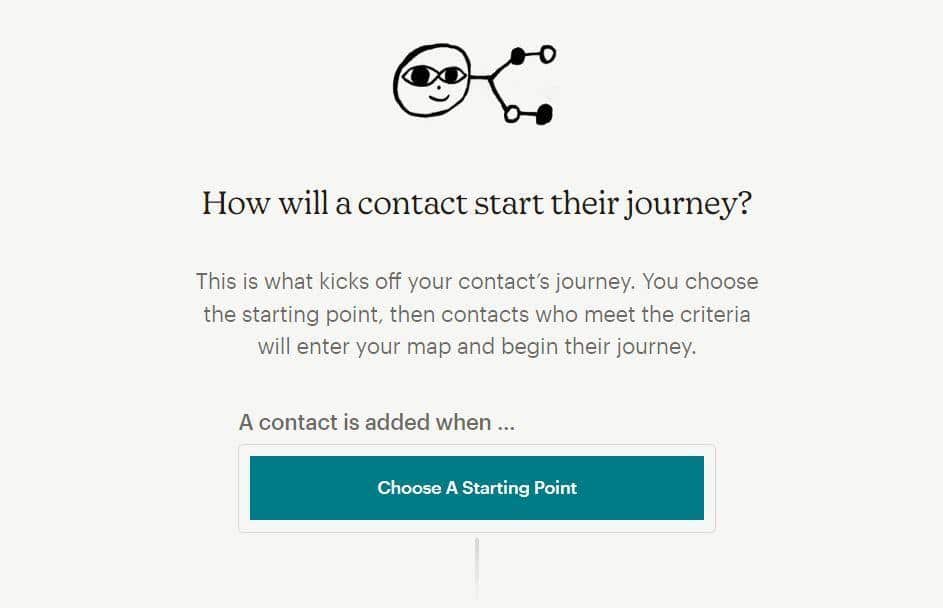
Here’s what you’ll see after clicking “Choose A Starting Point”.
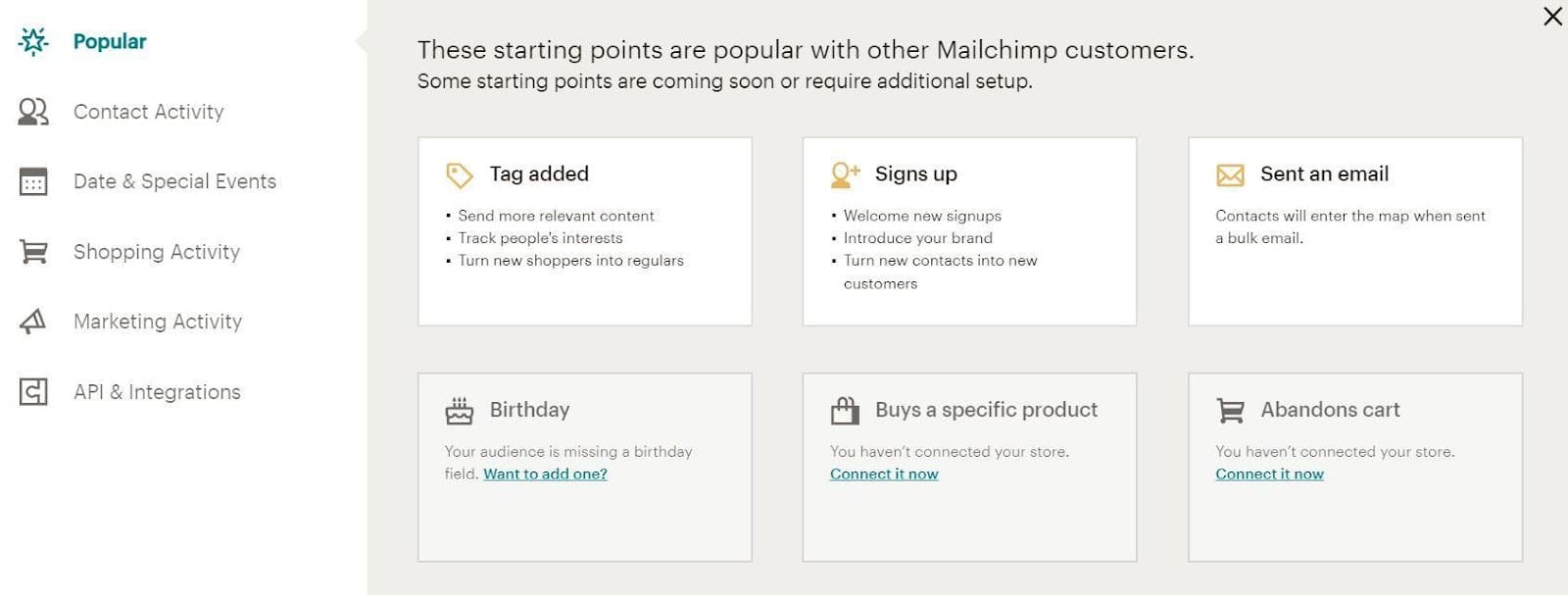
Here, you’ll see a list of different starting points. You can choose one depending on your goals.
For instance, if you want to send a “Welcome” email to your new subscribers, you should be choosing the “Signs up” starting point. Next, you can add multiple journey points depending on the paid plan you’re on.
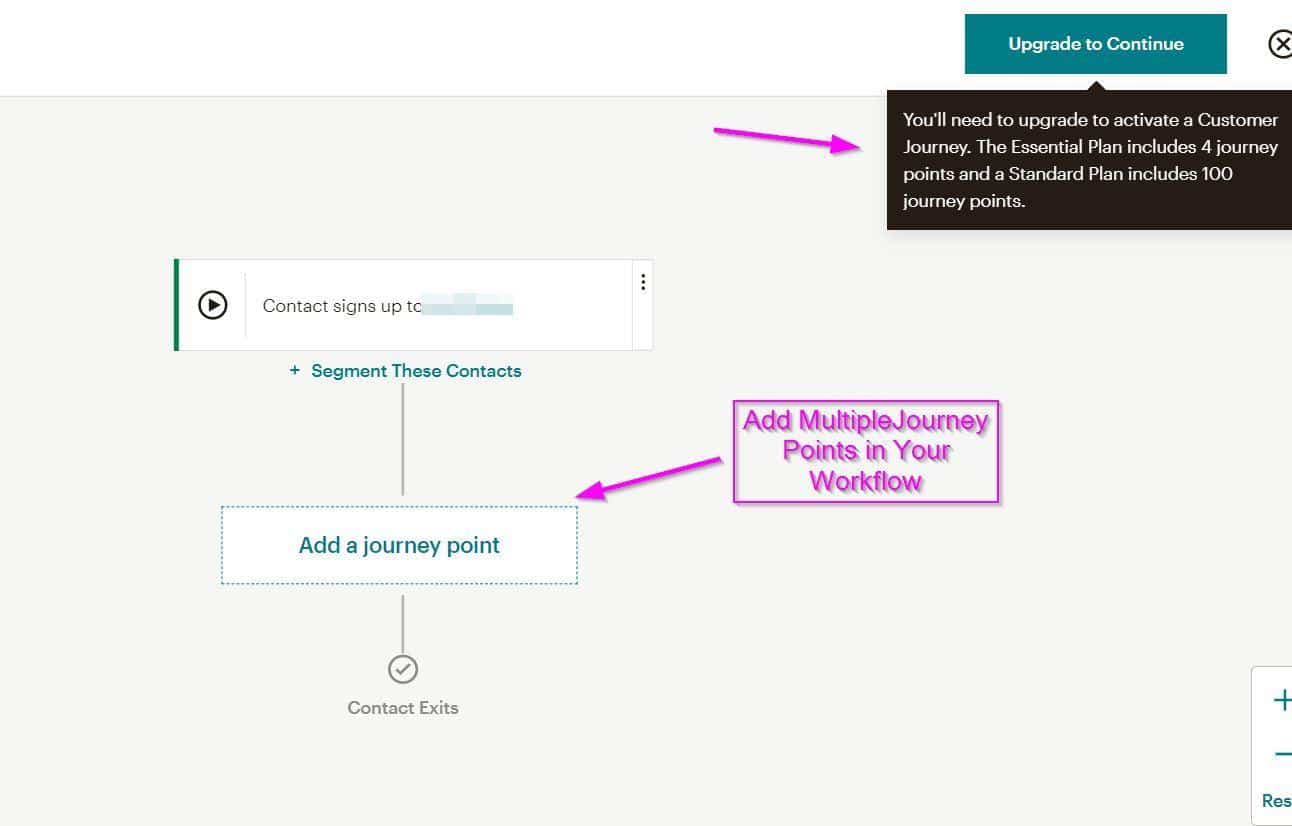
Again, you have to get a paid package to use MailChimp’s customer journeys (Drip campaigns).
Flodesk
To create an automation sequence in Flodesk, you’ll need to create a workflow. You’ll find the “Workflow” option at the top of your Flodesk dashboard. After clicking on it, you’ll have to select “New workflow”.

In the next step, Flodesk lets you select from pre-designed sequences. Let’s say you want to create a welcome sequence for your new subscribers.

After selecting a suitable sequence, you’ll be able to add triggers to it. For instance, a welcome sequence will be triggered whenever someone submits their email address.
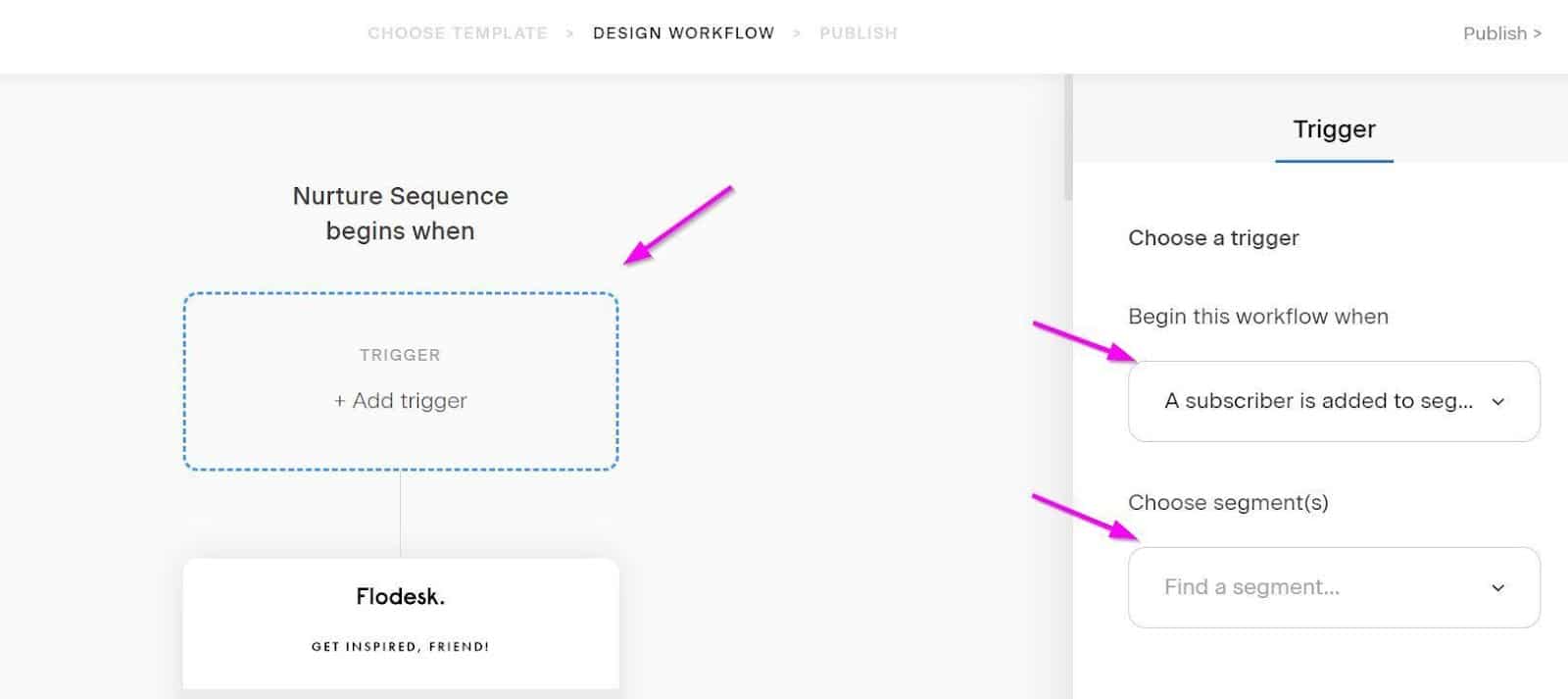
You can also add segment(s) to your workflows. Flodesk also lets you add time durations between your emails. For instance, a 30-day wait before an email is sent automatically (after the welcome email).
Integrations
Let’s see what MailChimp and Flodesk offer in this department.
MailChimp
Impressively, MailChimp lets you integrate over 250 apps directly. Popular MailChimp integrations are:
- Drupal
- Squarespace
- Stripe
- Canva
- Shopify

You can even integrate websites like Facebook, LinkedIn, and Vimeo. For analytics, MailChimp lets you integrate SurveyMonkey, Formstack, Typeform, and more. Some apps can be integrated natively while others will require Zapier.
Flodesk
Flodesk integrates with thousands of third-party apps through Zapier.

So, if you’re already using an app, chances are you’ll be able to integrate it with Flodesk.
Insights
Email analytics and insights help you gauge the effectiveness of your email marketing campaigns. Without them, it’s hard to identify what works and what doesn’t. Here’s how Flodesk and MailChimp compare as far as email analytics are concerned.
MailChimp
Fortunately, MailChimp gives you enough campaign analytics, helping you focus on the strategies that work. For instance, the “Reports” tab under “Campaigns” shows the number of people that:
- Opened
- Clicked
- Bounced
- Unsubscribed
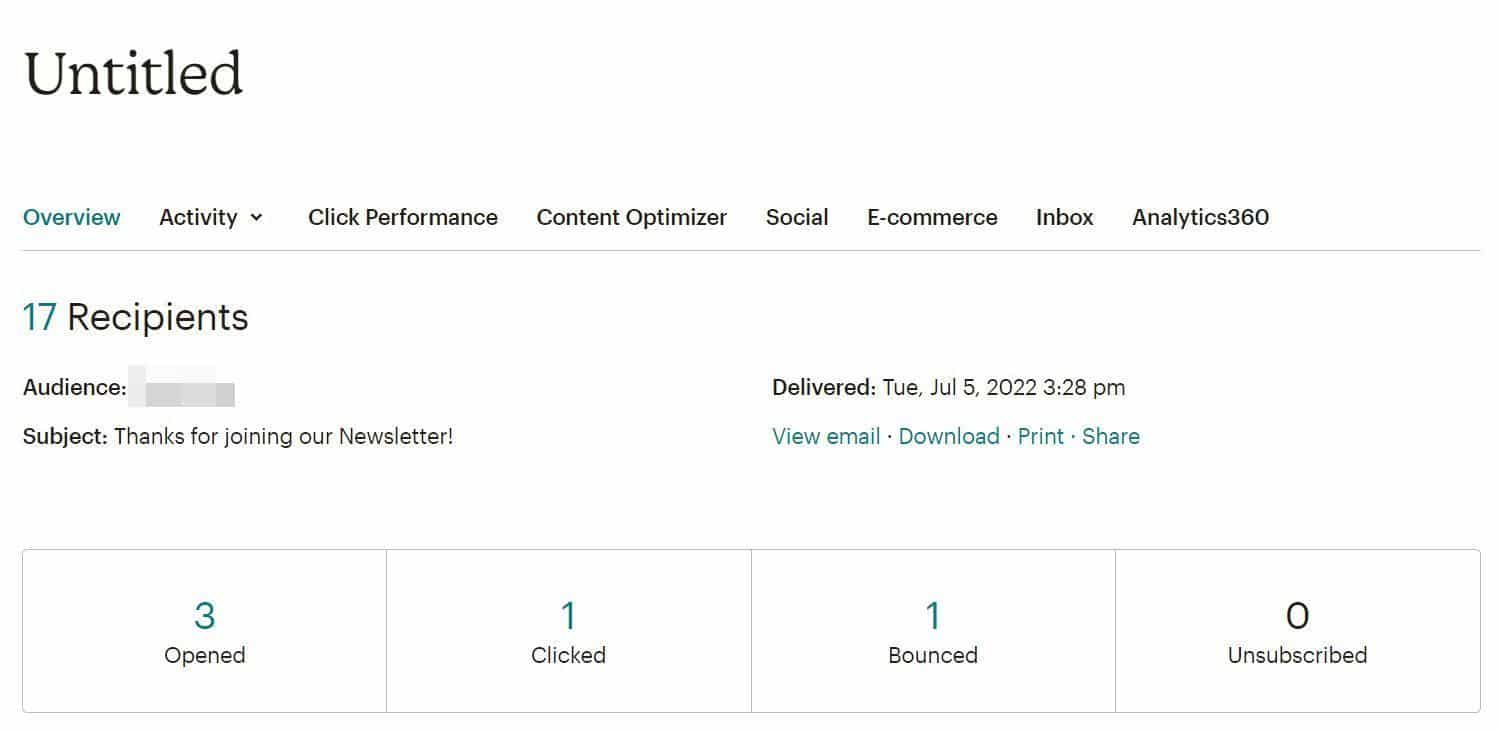
It also tells you how your site has been performing in terms of:
- Subscriber conversion rate
- Subscribers
- Page views
- Unique views

In addition, MailChimp’s audience dashboard gives you the engagement analytics and your audience’s top locations.

Flodesk
Unfortunately, Flodesk doesn’t offer the analytics feature. So, with Flodesk, you’ll have a hard time understanding what your audience wants and what type of content works the best.
Pricing
Let’s see which of the two email marketing platforms is more cost-effective.
Mailchimp

Now, the best thing about MailChimp is that it lets you use most of its features for free. However, the paid plans can get expensive pretty quickly. The reason for that is MailChimp’s pay-as-you-grow pricing structure.
With MailChimp, you’re essentially paying for every customer or subscriber. This means you’ll have to share your profits with MailChimp. And understandably, many marketers don’t like that.
Flodesk
Flodesk’s pricing plan is super simple; you get everything unlimited at $38/month. While that may look more expensive than MailChimp’s “Essentials” plan, MailChimp offers only 2.5k contacts at $34/month.
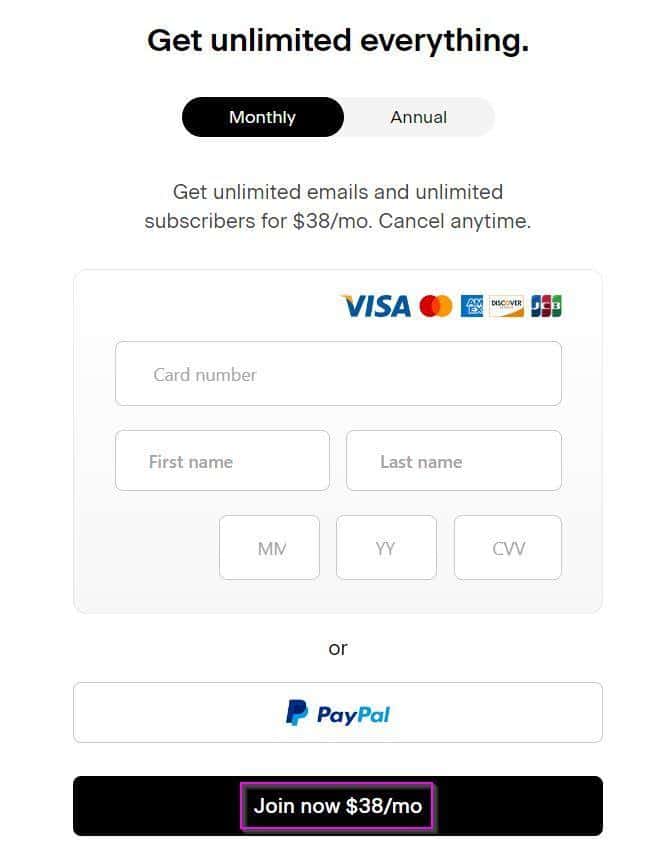
So, Flodesk’s simple $38/month unlimited everything pricing structure makes it a lot more cost-effective, especially if you have a lot of subscribers.
Flodesk vs. MailChimp: Verdict
Overall, MailChimp does stand out on multiple fronts. The only thing that could prevent you from choosing it would be its pay-as-you-grow pricing structure. But, a growing audience does imply that your business is growing. This means you’ll also be able to afford the tool as your audience grows.
MailChimp is best if you want:
- More features
- To have more flexibility
- A free plan
- To manage a small audience
- Analytics
- To A/B test your campaigns
Flodesk is best if you want:
- A simple email marketing tool
- Powerful workflows
- An affordable tool
